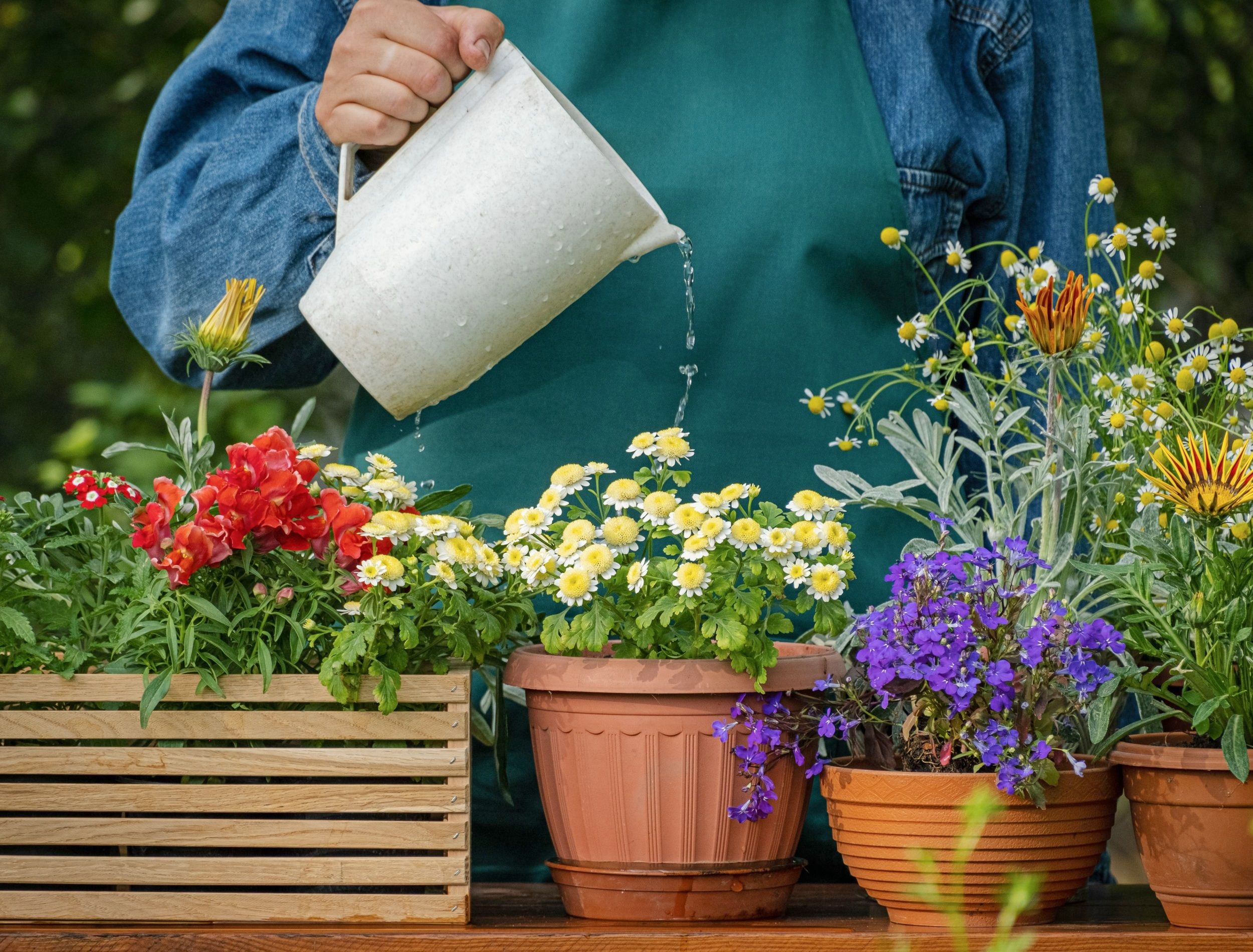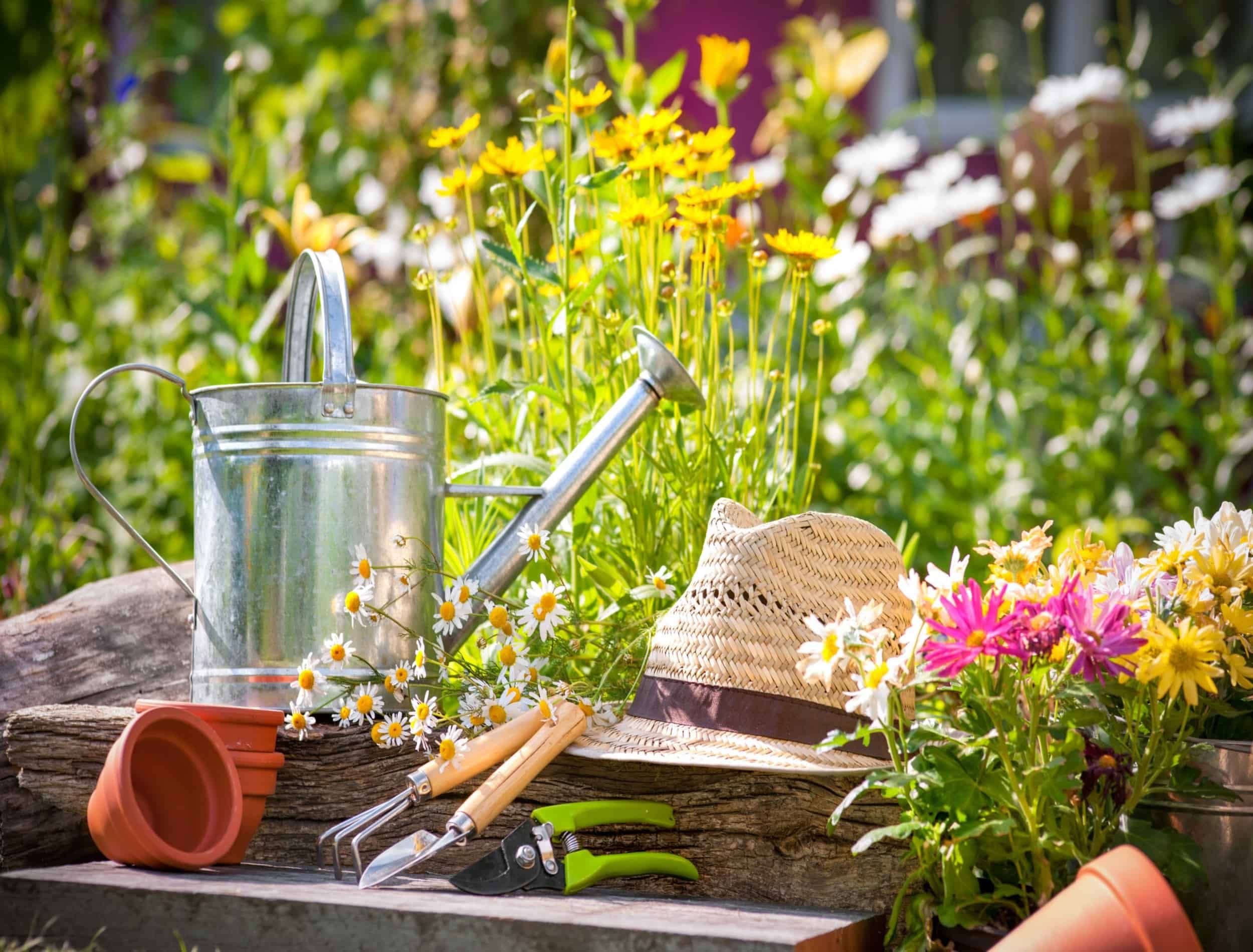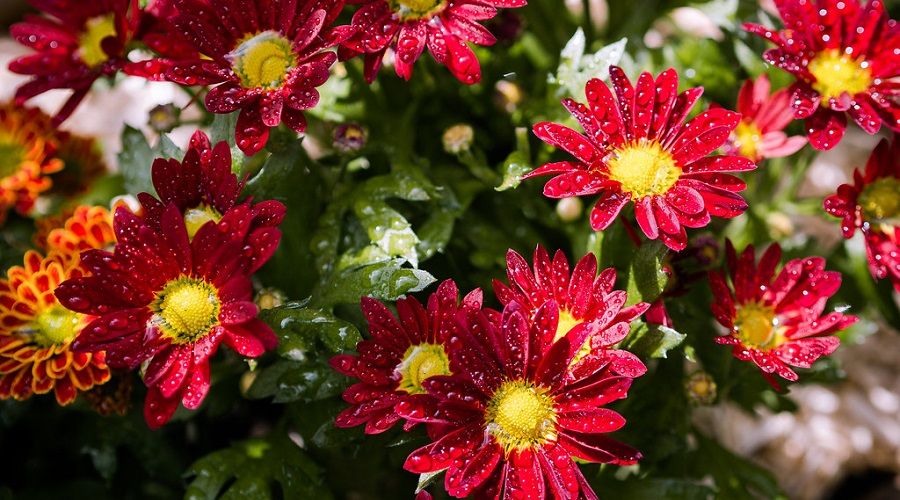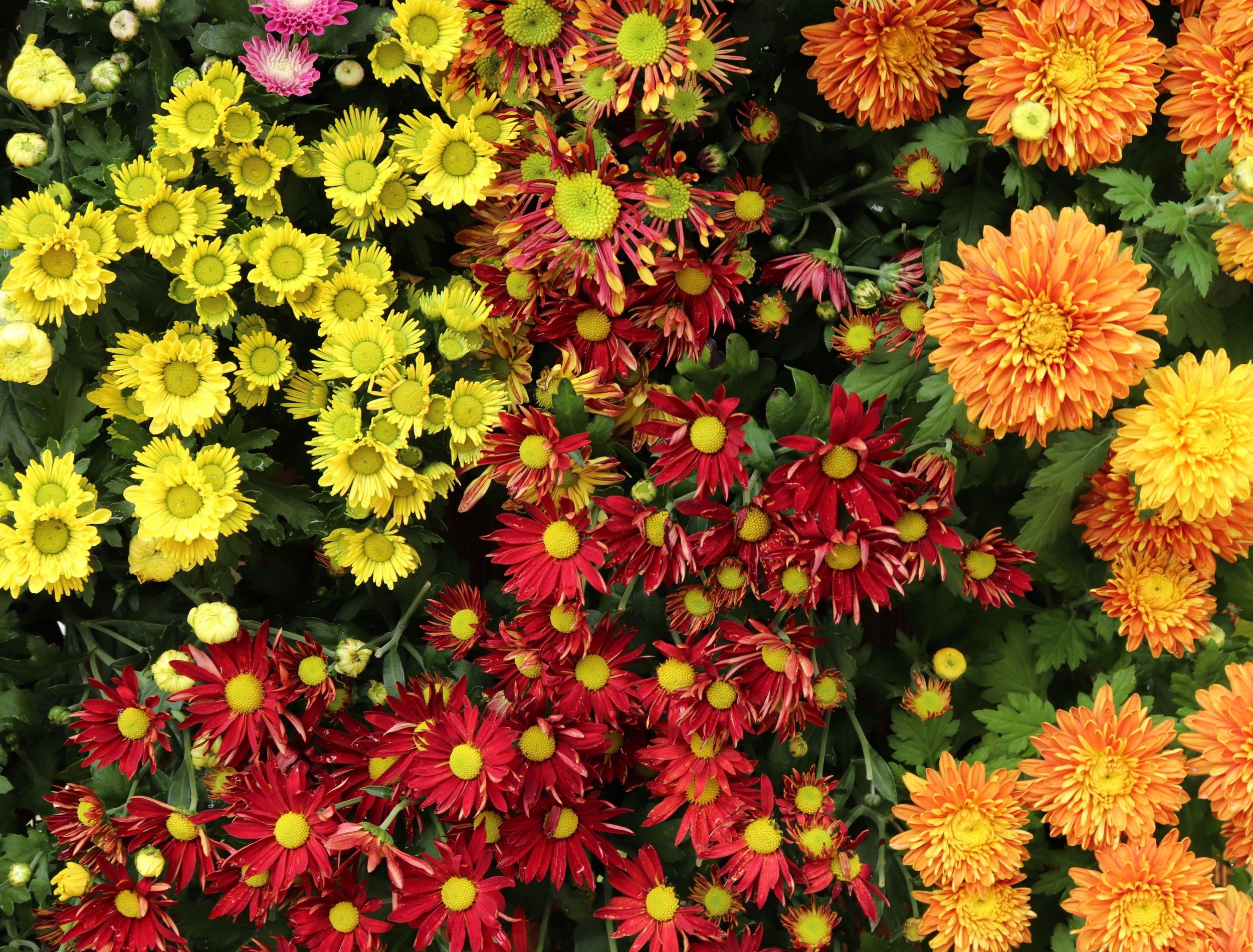Chrysanthemums are a beloved and interesting flower to add to your collection, blooming in various shades and color combinations. These bright and cheery perennials come in many varieties so it'll be easy to find one that matches your aesthetic. Not only are their 13 different cultivators to choose from, there are also hardy varieties for the forgetful gardeners.
These flowers are easy to maintain, flourishing in your garden or in containers. Growing between 12 and 36-inches tall, chrysanthemums are a great flower if your looking to add height and dimension to your garden. But, in order to get the most out of these plants you need to know how to properly grow and care for them.
If you haven't come across mums in your gardening experience, keep reading to learn something new. If you're an experienced gardener, a refresher course couldn't hurt. So, here is how to grow and care for chrysanthemums in early spring and late summer.
What You'll Need
Image credit: Alexander Raths via Shutterstock
To grow and care for your chrysanthemums, you’ll need a few tools and supplies.
- Chrysanthemum plants or seeds
- Soil with organic matter
- A plot of sunny land or pots in which to plant the flowers
- Trowel
- Hand cultivator
- Watering can or hose
- Organic pesticides (as needed)
- Organic fungicides (as needed)
How to Grow Those Mums
Image Credit: Denis Bourez via Creative Commons
Successfully growing mums in your garden will, of course, depend on which varieties you grow and the climate you live. There are both hardy and florist chrysanthemum varieties to choose from, but the florist mums varieties have limited root systems. Because of that, they won't do as well as hardy varieties.
Once you’ve selected your mum varieties, you’re ready to plant.
Step One:
Plant your garden mums in the correct season for the variety you’ve selected. If you live in cooler climates, plant your mums in early spring. For this living in warmer temperatures year-round, plant your mums in late summer or early autumn.
If you're going with potted plants, they still do best in these seasons. The plus side about potted plants is that you can be a bit more flexible with them. For example, you can bring them indoors before the winter and re-plant them after the last spring frost.
Step Two:
Make sure to plant mums in well-drained soil to avoid root rot. Ideally, use organic soils with plenty of compost materials. This will naturally feed the mums proper nutrients without the extra attention.
Step Three:
Chrysanthemums prefer a sunny spot, so find sunny to partial shade locations for the best possible health of your flowers. If your flowers are indoors, place them near a sunny window.
Step Four:
Once you’ve planted the mums, water them thoroughly. Keep the soil moist all season to help the shallow root systems stay hydrated and healthy.
Step Five:
Be sure to avoid overwatering to prevent issues with the plant’s health and the attraction of certain pests. Overwatering can also cause root-rot, a problem no gardener wants to encounter.
Step Six:
Ideally, use organic pesticides only if you find aphids, spider mites, or Chrysanthemum leaf miners on the scene. Powdery mildew can also cause issues for these plants and should be treated by removing affected parts of the plant and a healthy dose of fungicide, as directed on the packaging.
You can also use environmentally safe options by using baking soda .
Best Mums to Grow
Image credit: Shafiq Ali Sabri via Shutterstock
With well over 100 types of chrysanthemums out there, many varieties would likely fit your definition of “best” for your flower bed setting and can be a perennial plant depending on the variety. Make sure the variety(s) you choose work well in the climate, soil type, and sun/shade ratio in which you’re planning to plant.
You can also consider the flower shapes, range of colors, and other aesthetic components of the mums and choose those unique traits that best suit your location and taste.
Some of the best varieties for cooler climates include:
- Classic Garden Mums
- Firecracker mums
- Mammoth mums
- Igloo series mums
- Morden mums
- Weyrich chrysanthemum flower
- Minnesota or Minn series
- Arctic chrysanthemums
- Rubellum mums
Some of the best varieties for warm weather climates include:
- Single mum bolero
- Single mum Clara Curtis
- Yoko Ono pompon mums
- Moonbeam pompon mums
- Ruby mound cushion mums
- Chiffon cushion mums
- Anemone mums
- Symphony spider chrysanthemums
The Flower for All Seasons
Depending on where in the world you live, chrysanthemums could well be your all-season flower. They love bright light, warm weather and bloom anywhere from spring into early winter. If you keep their soil well-drained and keep them fed, they’ll stay bright and inviting for months at the least.
Have any tips or tricks for growing mums? Be sure to leave them in the comments below! Happy gardening!




